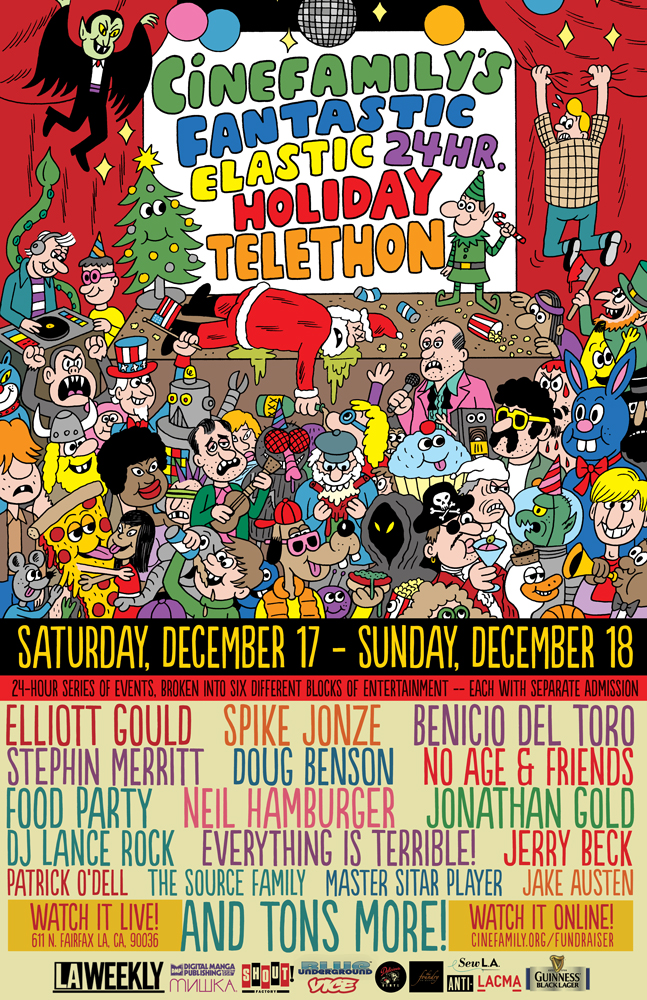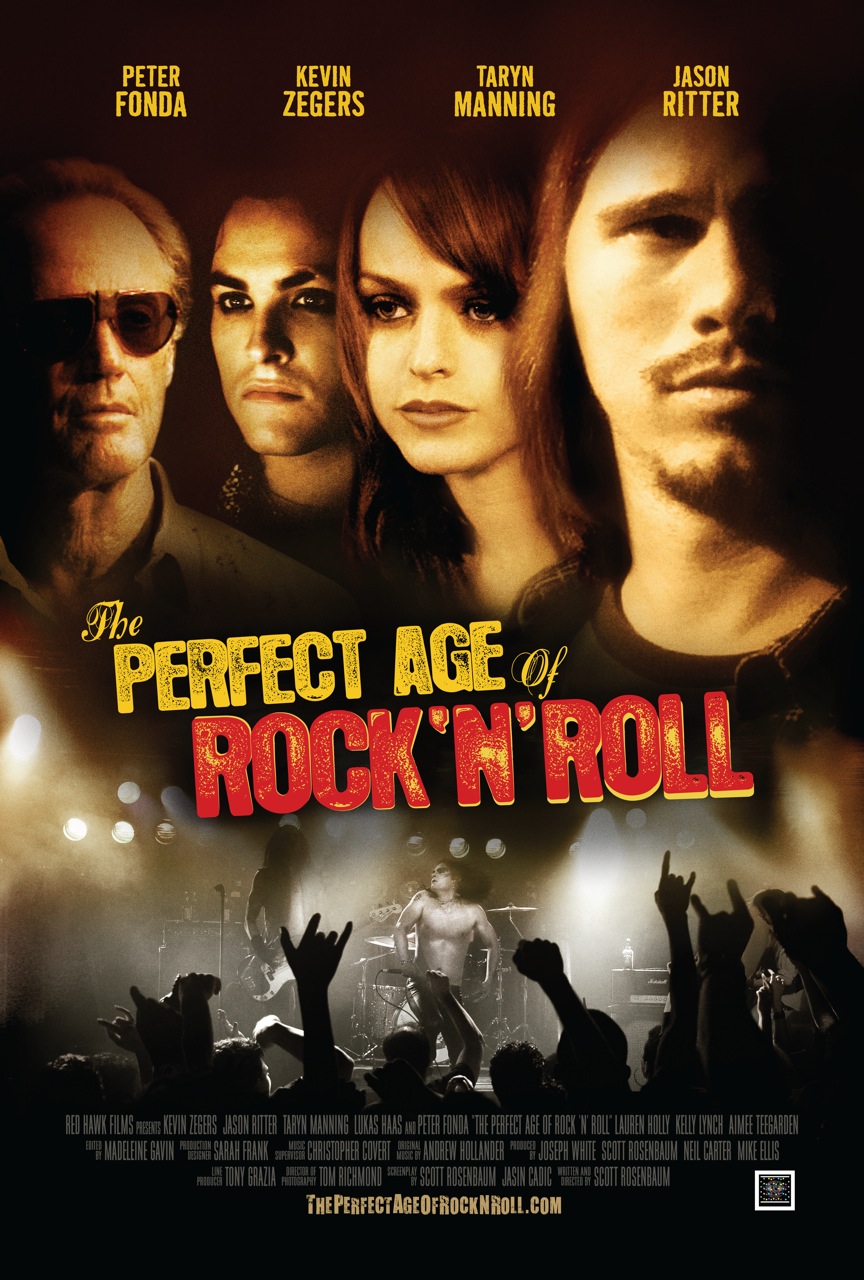By Shruti Ganguly
Collaborative features are in the air. Friday we glimpsed the end of auteur culture with Audrey Ewell's post on the documentary The 99 Percent Film. What happens though when the collaborative film is an omnibus narrative? Are twelve more auteurs born into the world?
How are we going to navigate this new future of team-based filmmaking? What are the Best Practices we have to put in place. Producer Shruti Ganguly shares some lessons she's learned from working on James Franco's latest concoction.
Collaboration is synonymous with filmmaking and one can often find quotations from filmmakers and writers regarding this aspect – David Mamet describes filmmaking “as a collaborative process. Bend over” while Coppola “[likes] to say that collaboration is the sex of art because you take from everyone you’re working with.” Often collaboration occurs between directors, producers and their creative heads, but what happens when one feature film is crafted together by 12 different directors, where characters overlap, stories integrate, and themes repeat? This opportunity arose in a Tisch 3rd-year Directing class that James Franco was teaching this fall. Each of the 12 students selected a poem to adapt from Tar, a collection of poetry by Pulitzer prize-winning poet, C.K. Williams, and then the short film scripts were brought together to create, Tar, the feature film.

As one of the producers on the project, I often describe Tar as the love child of Paris, Je T'aime (working with multiple directors on a common theme), I’m Not There (different impressions of the protagonist as seen through various stages in his life) with Tree of Life (our primary aesthetic reference), with the production schedule of TV – where directors worked with the same cast and crew, crafting ‘episodes’ or scenes.
Based on our experience, and given that we will be doing this class again in the spring, with new directors and new material (another Tisch 3rd-year Directing class), these are some of my takeaways when it comes to collaborating in this way:
Set the tone early on: Directors will have their own interpretations of similar material, and this of course, is what makes their own storytelling styles unique, but it is important that for projects that belong to a ‘whole’ that everyone agrees on a certain tone. This enables everyone to set off in the right direction from the first step. In the case of Tar, James, provided the students with visual and story references. The suggested viewing included Tree of Life, Hunger, Who's That Knocking at My Door, Au Hasard Balthazar and Stranger Than Paradise.
Be familiar with each other’s material: In class and online, we provided feedback to each other regarding the treatments and the scripts. Not only was this input helpful to each director in his or her development process, it also allowed everyone to know the direction their peers were moving towards, and in turn, how their piece fit into the overall project. It is important to also have these discussions in person – that’s when we could provide feedback in the best way, as opposed to our initial online conversations.
Establish themes: In the development process, resounding themes (visual, story and character) came up – from the protagonist’s issues with women and mortality, American capitalism and destruction, to images of airplanes, windows, lips and masks. By discussing these together, directors were then conscious of how to incorporate these elements into their own stories.
Form an overall creative team: Instead of each piece having its own DP, producer, art department and so on, which would probably dissect the film further as well as become a bigger financial strain, we established a creative team that could aesthetically connect the films together. We had two DPs (also Tisch students) who each filmed 5-6 projects, one main production and costume design team, who established the worlds of the films (and in turn hired their crews for the projects) and two line producers who were assigned to each DP and their slate of films. On Tar, we had Team Pedro and Team Bruce named after the DPs and our classmates, Pedro Gomez Millan and Bruce Thierry Cheung, respectively. Each team ended up having its own way of functioning and scheduling, and given the very demanding actor and academic schedules, this allowed us to have a parallel and simultaneous shooting schedule. Essentially we shot most of Tar within two weeks, where each film has 2 full days of shooting.

Communicate: This is the most basic and important aspect of collaboration but it is still the hardest to follow. On Tar, we created a Google group, so questions and ideas were shared in a forum, encouraging people to be on the same page, and also be aware of general concerns. And even then, there tended to be some confusion at times. But at least together, answers were found.
Give each piece its independence: While being aware of the bigger picture, it is also important, especially for a project like this one, to allow each film to have its own breathing room – where something unique and special from the director’s own style is upheld and celebrated. Else why have multiple directors craft a feature film? Now in the post-production process, each director is responsible for putting together his or her own film initially, and then we will have a supervising editor who will look at all the pieces together and connect them.
Set a timeline: It was important for certain deadlines to be met – whether it was turning in a new draft or providing feedback to finishing and viewing test shoots. (James asked each director to film and edit a complete test of their scripts, which we then viewed and critiqued. And this proved very helpful when it came to reworking scripts and stories). For the most part, the directors turned in their material and ideas in a timely way, which enabled us to move through the semester and consequently shoot the film when we had planned. Missing or not following deadlines could have proven detrimental to Tar, given that each piece was so closely related to one another.
Be flexible, embrace change: Coming off of our 2nd-year films, where we managed every single aspect of our short films, we found ourselves in situations we couldn’t necessarily control – Shooting in a locations that worked within the budget better, to switching Day for Night, given an actor’s availability, to cutting out entire scenes last minute if, in collaborating with the actors, we felt that a beat could be achieved within another scene. While this was also a new style of working for many, and at times frustrating, it also was liberating – to make the best of a situation, and then trust the performers to do the rest.
This class and film was an experiment. It was challenging as we were creating something in a way that had never been done before, especially within an academic system. But after wrapping principal photography, it has been infinitely rewarding and as we begin our post-production process, I am certain we will create a beautiful movie together – one that stars James Franco, Mila Kunis, Jessica Chastain, Michelle Williams, Henry Hopper, Zach Braff, and Bruce Campbell, filmed in and around Detroit, Michigan.
 Shruti Ganguly is currently enrolled in NYU’s dual-degree program in film production, where she will receive an M.F.A. from the Tisch School of the Arts and an M.B.A. from the Stern School of Business, with a focus on Social Innovation and Entertainment/Media/Technology. Before starting at NYU, Shruti was a producer at NYLON Magazine, heading their TV department. Shruti continues to direct and produce music and fashion videos, while running an cinema advocacy group, EchoChamber, she co-founded with her producing partner Smriti Mundhra.
Shruti Ganguly is currently enrolled in NYU’s dual-degree program in film production, where she will receive an M.F.A. from the Tisch School of the Arts and an M.B.A. from the Stern School of Business, with a focus on Social Innovation and Entertainment/Media/Technology. Before starting at NYU, Shruti was a producer at NYLON Magazine, heading their TV department. Shruti continues to direct and produce music and fashion videos, while running an cinema advocacy group, EchoChamber, she co-founded with her producing partner Smriti Mundhra.




























